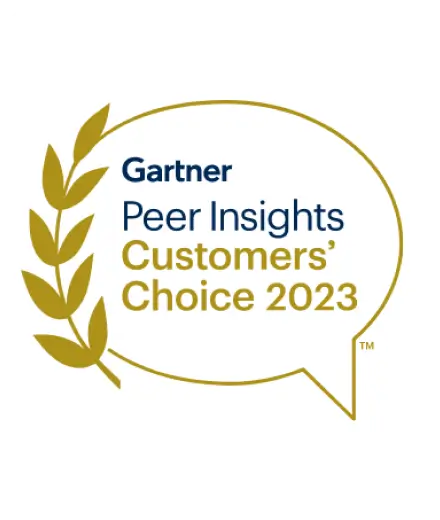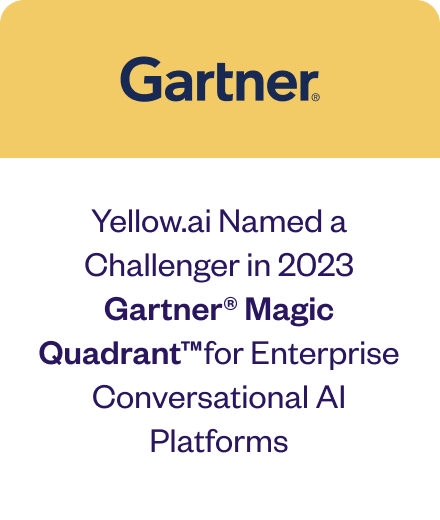The transformational power of automation in healthcare is undeniable, especially as the sector grapples with increasing demands and operational challenges. This article sheds light on exactly what automation entails in this context, from robotic process automation in healthcare for administrative undertakings to the role of intelligent automation in healthcare in enhancing clinical processes. With technologies like chatbots already making significant real-world impacts, the article delves into the critical areas where automation is pivotal. It outlines how healthcare organizations can harness their full potential for optimal patient care.
The past decade has witnessed a profound transformation in the healthcare sector. A few years ago, 54% of healthcare entities were leveraging automation strategies. Fast forward to 2020, and that number soared to a staggering 90%. This rapid ascent is not just about keeping pace with technology but fundamentally redefining patient care.
Today, where operational costs soar, and the demand for superior healthcare is constant, the healthcare sector is under pressure, a pressure that only innovation can alleviate. Gone are the days when mentioning automation in healthcare would conjure images of robotic arms performing surgeries. Today, it spans a spectrum that ranges from robotic process automation in the healthcare industry for administrative tasks to intelligent systems for clinical workflows.
Imagine a world where tedious, time-consuming tasks prone to human errors—like patient data collection or prescription management—become streamlined, efficient, and nearly faultless. That’s the promise of automation in healthcare. Whether it’s intelligent systems ensuring no harmful drug interactions or AI chatbots efficiently managing patient inquiries, automation is no longer the future—it’s the present.
Related must read:
- Customer service automation: Full guide
- What are the trends in automation 2023?
- 7 Ways to improve the sales cycle using CX automation
- What is customer experience (CX) in healthcare?
Automation in healthcare: What does it mean?
At its core, automation in healthcare signifies the integration of innovative digital tools and technologies to streamline, enhance, and simplify healthcare processes. Far from being just a buzzword, automation is synonymous with efficiency and precision in an industry historically bogged down by manual procedures and time-consuming administrative tasks. As healthcare institutions pivot towards a more tech-savvy model, several components epitomize the spirit of this transition.
Quick Facts:
- A whopping 90% of healthcare systems since 2020 have embraced the power of AI-based automation, indicating a massive shift towards technologically advanced healthcare solutions.
- As per Statista’s data, the healthcare market for artificial intelligence (AI) stood at $11 billion in 2021 and is forecasted to grow to $187 billion by 2030.
- 72% of healthcare leaders trust AI to support nonclinical, administrative tasks
- 96% of healthcare executives believe AI is essential for health equity.
It’s clear that in healthcare, automation has pioneered several transformative changes in key operational areas. Consider patient booking. The traditional challenges, marked by tedious phone interactions, have been replaced with sophisticated automated systems.
These platforms empower patients, granting them the autonomy to book, modify, or cancel appointments seamlessly. Transitioning to the domain of claims and denials, automation has revolutionized the landscape. It facilitates the expedient processing of claims while simultaneously addressing denials, exemplifying operational precision, and reducing discrepancies. The innovations don’t end here. Triaging and diagnosis have welcomed the advent of AI, enabling a meticulous assessment of preliminary patient symptoms.
This sophisticated analysis aids in proficiently categorizing cases, ensuring they’re aptly channeled to the respective medical specialists. Lastly, in patient feedback, automation has refined the process. It has instituted systems that adeptly capture patient sentiments, laying the foundation for continuous improvements in the quality of care.
Automation in healthcare comes with a plethora of advantages. It significantly enhances efficacy and accuracy, ensuring tasks are executed correctly the first time, thereby minimizing errors. As patient data privacy remains a top concern, automation provides stringent security measures. It’s not just about preventing administrative errors; the system’s automated checks and balances are crucial in reducing potential medical mistakes. On the human side, automation has proven to be a boon for healthcare staff. It lightens their workload, which drastically diminishes burnout rates.
This streamlined approach not only leads to substantial cost savings by reducing the need for manual intervention but also ensures seamless communication between systems, making patient data readily accessible as needed. Furthermore, as routine tasks get automated, healthcare professionals can channel their expertise where it truly matters – in patient care. This shift boosts their job satisfaction and significantly enhances patient outcomes.
Three key areas where healthcare automation plays a critical role
There are specific focal points in healthcare where the need for efficiency, precision, and scale converge. These are the critical areas where delays, errors, or inefficiencies could have cascading repercussions. As we build on our understanding of automation’s value in healthcare, let’s spotlight three pivotal sectors that stand to gain immensely from this digital metamorphosis.
1. Revenue cycle management (RCM) and claims denial
Revenue Cycle Management (RCM) is central to the financial well-being of healthcare institutions. However, many healthcare providers are working with outdated systems and complex workflows, leading to an increased number of claim denials. Notably, around 79% of RCM systems still use older standalone applications, resulting in close to 20% of claims getting denied due to various issues, such as improper authorization.
Integrating automation into RCM processes can help address these challenges. Automation can reduce human error and improve efficiency by streamlining complicated workflows—from the initial pre-claim phase to transactions and payment postings. Traditionally manual tasks can be tackled more efficiently by leveraging tools like robotic process automation (RPA) and AI. Solutions like Yellow.ai further enhance this transformation, adding intelligence to RCM operations.
2. Support center
The support or contact center plays a significant role in a patient’s overall healthcare experience, influencing a large portion of their journey. These centers, responsible for tasks ranging from appointment scheduling to data management, are often overwhelmed due to the volume and complexity of their responsibilities.
The Solution: Here again, automation proves invaluable. Support centers can provide faster and more accurate service by implementing automated solutions for tasks such as patient communication, chatbot-driven support, and data management. As a result, staff can shift their focus from routine tasks to more patient-centric initiatives, enhancing the overall patient experience.
3. Clinical workflow automation
Daily clinical operations involve a series of repetitive tasks, from managing inventory to IT-related activities. This repetition can lead to staff fatigue and inefficiencies, which, in turn, can compromise patient care and operational security.
Automating these workflows can make a significant difference. By doing so, healthcare providers can reduce staff burnout, improve the flow of information between systems, and strengthen healthcare information management. The benefits include fewer errors, increased revenue, and better protection of sensitive patient data.
Benefits of automation in healthcare
From the foundations of revenue management to the nuances of patient care, we’ve witnessed how automation is transforming the healthcare landscape. As we progress into the digital age, it’s becoming clear that the healthcare sector can gain immensely from these innovations. But how exactly can healthcare organizations, particularly larger-scale institutions, harness the potential of automation?
- Seamless and prompt appointment booking
- Support automation
- Easy virtual check-ins
- Effective information collection
- Improved efficiency, accuracy, and productivity
- Reduced potential for medical errors
- Reduced staff burnout
- Optimized costs and revenue boost
- Enhanced interoperability
- Higher employee satisfaction and retention
- Compliance and enhanced data security
1. Seamless and prompt appointment booking
The days of tediously flipping through appointment books and making endless calls to schedule patients are waning. Automated appointment booking systems have revolutionized this space. Rather than human staff juggling complex rules and criteria to fit a patient with the right medical expert, these systems seamlessly handle scheduling, rescheduling, and even appointment cancellations. Furthermore, they offer the added boon of dispatching follow-up reminders, ensuring patients remain punctual, and reducing the all-too-common no-show scenarios.
2. Support automation
We are living in a hyper-connected world, where the expectation of prompt, round-the-clock customer service is fundamental. That is where customer support automation helps. By harnessing tools like AI chatbots, automated workflows, and trigger-based emails, healthcare institutions can drastically cut down on customer service costs. More importantly, they can bolster the quality of service, ensuring rapid response times and consistent 24/7 support, allowing human staff to intervene and engage where they’re most needed.
3. Easy virtual check-ins
The conventional check-in process, often marred by lengthy waits and repetitive paperwork, is undergoing a facelift. Virtual check-ins prioritize accessibility and patient convenience. Leveraging encrypted technology, these systems eradicate the need for staff to be engrossed in manual data entry. Instead, they offer intuitive digital forms, enabling patients to input their information directly. This streamlines the process and substantially mitigates the potential for human error.
4. Effective information collection
Gone are the days when chatbots were mere novelties on websites. Today, they serve as powerful tools for information gathering. Armed with conversational AI capabilities, these chatbots can meticulously collect, categorize, and store pivotal patient data — be it basic details like name and address or more intricate information such as symptoms, ongoing treatments, and insurance particulars. In doing so, they lay the groundwork for more personalized and efficient patient care.
5. Improved efficiency, accuracy, and productivity
The healthcare landscape is a complex web of processes, each crucial in its own right. By integrating automation, institutions can enhance operational flow, ensuring tasks are swiftly and precisely completed. As seen with platforms like Yellow.ai, automation enables organizations to handle high-throughput tasks with increased accuracy, freeing up staff to engage in patient-centric roles. This shift increases productivity and ensures the workforce can operate without constant roadblocks.
6. Reduced potential for medical errors
Safety is paramount in healthcare. With every manual process comes the potential for errors, some of which can have grave consequences. Robotic process automation (RPA) introduces a level of precision that can’t always be guaranteed by human intervention alone. For instance, automation ensures consistent record-keeping across multiple systems, allowing attending physicians full access to vital patient data. By streamlining information exchange between departments, healthcare automation actively mitigates the risk of administrative oversights.
7. Reduced staff burnout
The constant tug-of-war between administrative responsibilities and patient care can be draining for healthcare professionals. Repetitive, manual tasks not only consume precious time but also contribute to increased stress levels. It’s worth noting that an overwhelming 92% of healthcare professionals attribute excessive administrative tasks to feelings of burnout. By deploying automation, these mundane responsibilities can be minimized, allowing staff to redirect their energies toward more meaningful, patient-centered tasks.
8. Optimized costs and revenue boost
Financial stability is integral to the growth and sustainability of any healthcare institution. Automated workflow technologies provide a dual benefit – they enhance operational efficiency while concurrently reducing costs. By curtailing human errors and optimizing resource allocation, automation ensures that institutions can offer stellar patient care without straining their budgets.
9. Enhanced interoperability
The seamless flow of information is crucial in a connected world. Yet, many healthcare institutions grapple with fragmented systems, leading to information silos. Automated healthcare systems champion interoperability, ensuring that patient data is universally accessible. Such streamlined access to data reduces miscommunication, aids in insightful data trend analysis, and minimizes administrative redundancies—all contributing to both staff and patient satisfaction.
10. Higher employee satisfaction and retention
It’s not just patients who benefit from streamlined healthcare processes. As organizations lessen the administrative burden on their staff through automation, they observe an uptick in employee morale and satisfaction. Engaged and content employees are more productive and more likely to stay loyal to the organization, fostering an environment of stability and growth.
11. Compliance and enhanced data security
Patient data is sacrosanct. In the backdrop of rising concerns over data breaches and cyber threats, healthcare institutions are in a relentless pursuit to bolster their data protection strategies. The introduction of automation, with its minimal human intervention, curtails the risks of inadvertent data leaks or manipulations. Moreover, adhering to regulations such as the Health Insurance Portability and Accountability Act (HIPAA) becomes more streamlined with automated systems. Such systems are designed to meet not only HIPAA but also other compliance standards, ensuring that patient data remains inviolable. This strengthens the foundation of trust that patients bestow upon healthcare establishments.
How Yellow.ai helps with automating healthcare service?
As the healthcare industry accelerates its adoption of automation, Yellow.ai emerges as a pivotal player in driving this transformation. Yellow.ai has positioned itself at the confluence of AI-driven services for healthcare providers to make a tangible difference. Here are some specific ways:
- Round-the-clock patient support: With Yellow.ai’s HIPAA-compliant Dynamic Automation Platform, healthcare providers can address 80% of patient queries without human intervention, enhancing patient satisfaction by 40% and simultaneously slashing support costs by up to 60%.
- Empathetic voice AI agents: Ditch the robotic interactions! Yellow.ai’s Voice AI Agents emulate human-like conversations, making patient interactions more personal and understanding. These agents adeptly manage both inbound patient queries and outbound communications.
- Streamlined scheduling & referrals: Integration with existing CRM/ERP systems allows Yellow.ai to offer real-time patient referrals, appointment scheduling, consultations, and lab test bookings, making it a breeze for patients and ensuring optimal resource allocation for providers.
- Efficient billing and payments: The platform integrates seamlessly with existing payment solutions, simplifying the billing process and ensuring prompt and accurate payment collections.
- Virtual consultation across channels: With the platform supporting over 35 text and voice channels, virtual consultations have never been more accessible or versatile.
- Unified healthcare experience: The Conversational Service Cloud (CSC) by Yellow.ai ensures consistent patient interactions across multiple channels and devices, from post-consultation summaries to effortless access to physical clinics.
- Secure sharing of medical information: With utmost respect for patient privacy, Yellow.ai allows healthcare providers to securely share crucial data such as lab reports and prescriptions across several platforms.
Explore how Yellow.ai can redefine your healthcare service today. Book a demo now.
Final thoughts on automation in healthcare
The journey of healthcare from traditional methods to digitized and automated solutions is an evolutionary testament to the power of technology. As the intricacies of patient care merge with the sophistication of automated systems, the future of healthcare becomes increasingly promising. Automation, bolstered by solutions like Yellow.ai, is imperative, ensuring that healthcare institutions of all sizes deliver exemplary patient experiences while optimizing their operational undertakings.
Frequently asked questions (FAQs)
Why automation in healthcare?
Automation in healthcare enhances efficiency, reduces the potential for errors, and ensures a higher standard of patient care. By streamlining administrative tasks and clinical workflows, healthcare institutions can provide better patient experiences, reduce operational costs, and improve data security.
What is RPA healthcare?
RPA, or Robotic Process Automation, in healthcare, refers to the use of software bots to automate routine and repetitive tasks, such as data entry, billing, or claims processing. It reduces the scope for human errors and streamlines operations, leading to cost savings and improved patient care.
How do you manage patient appointments?
Patient appointments can be managed through automated systems that allow online scheduling, reminders, and virtual check-ins. Tools like Yellow.ai can facilitate these processes, ensuring smooth and efficient appointment management.
What are the challenges of RPA in healthcare?
While RPA offers numerous benefits, its challenges include the initial cost of implementation, the need for periodic updates and maintenance, integration with legacy systems, and the requirement for continuous training for staff to adapt to the new systems.
What is an example of RPA in healthcare?
An example of RPA in healthcare is the automation of claims processing. Instead of manual data entry and verification, RPA tools can extract relevant information, verify its accuracy, and process claims, reducing turnaround times and enhancing accuracy.
How are AI and ML used in healthcare?
AI (Artificial Intelligence) and ML (Machine Learning) are used in various ways in healthcare. It includes predictive analytics for patient outcomes, image recognition in radiology, personalized treatment plans, and chatbots for patient interactions. They help in making more informed decisions and provide personalized care.























